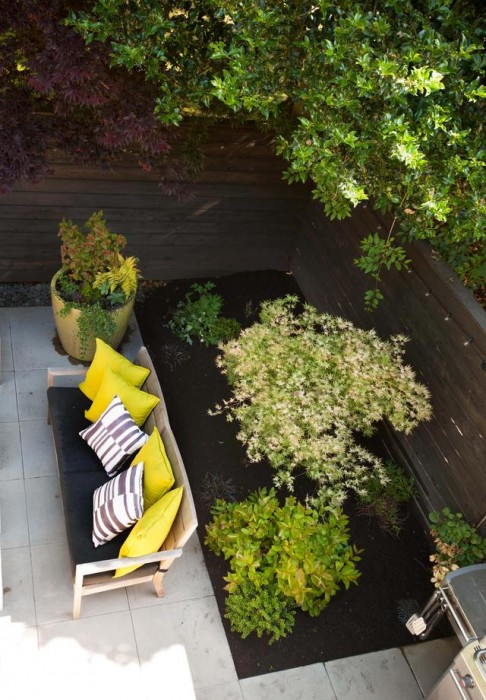Many of the home trends we see on Porch celebrate the new: new technologies, new room layouts, new ideas for home building. But there are some home features that have almost become extinct, like the root cellar. But thanks to some homeowners, these vintage ideas are still very much appreciated and welcome in the home. Let’s take a look at some old ideas that we think are due for a comeback.
Laundry chute
When the washer and dryer were introduced, they were often placed outside near the back of the home and not far from the kitchen. This was because early washing machines required a water source and sometimes heat. Washing machines and dryers have always been noisy, clunky and unattractive. they require power, water and ventilation and have been known to leak. It’s not uncommon to have a washer and dryer surrounded by piles of unattractive dirty clothes as well as bottles and boxes of detergent. It’s no wonder that many laundry rooms are located in the basement, garage or as far away from our living spaces as possible. Installing a laundry chute is a great way to deliver dirty clothes from the upstairs bedroom (for example) to the basement laundry room. And it certainly beats carrying heavy loads of wash down the stairs.
Clothes lines
Many homeowners still choose to hang their wet, laundered clothes and linens on an outdoor clothes line to dry. The sun dries clothing and linens without using any electricity and acts as a natural brightener and disinfectant to fabrics. Some homeowners swear by the lovely scent of fresh-air drying and believe that this is an excellent way to reduce energy consumption. Although air drying your clothes isn’t perfect (freezing temperatures or rain certainly don’t help), it can be a great alternative on sunny days.
Dumbwaiter
A dumbwaiter is a simple method of moving objects from one floor to another. Sometimes a dumbwaiter is mechanical, like a mini elevator, and sometimes it’s raised and lowered by hand. Whichever method, homes with several floors may find that a dumbwaiter is the perfect vehicle to move heavy or awkward objects from one floor to another. They were particularly important when homes had their kitchens on the lower floor and the dining room on the floor above. This elevator for food was also used in commercial restaurants and hotels; in fact, some restaurants still employ this device.
The storeroom
Before refrigeration, homes used naturally cool areas (like the basement) for a storerooms, cellars or larder in order to keep foods fresh. Canning, pickling and preserving was the best way to enjoy foods for a long time and it was the responsible homeowner who had a full storeroom. It was also the place to keep dry goods and other supplies for the home that can be negatively affected by heat or humidity. Homes today are generally built with plenty of storage and pantry space to keep extra food and supplies, but homeowner may still place canned goods and extras in a cooler space, like the garage, to help extend the lifespan. Homes with cooler basements might simply turn a corner of the room into a storage area, complete with shelving for storage. It’s an easy way to take advantage of a naturally cool area of the home and keep foods and other goods for emergency purposes.
 Breathable drawers for produce storage, Normandy Design Build Remodeling
Breathable drawers for produce storage, Normandy Design Build Remodeling
Composting
The concept of waste, particularly food waste, is a rather new way of living. When food is scarce, people tend to utilize as much of the food as possible. From bones to organs, stalks to seeds, an experienced cook knows that there is little to waste when it comes to food. In the old days, what couldn’t be consumed by humans was given to the animals or pets, or used for other household purposes (clam shells, for example, were used as a scraping and cleaning tool). Fortunately, composting has become popular again and some cities even have a composting program for homeowners who don’t want to set up their own bin. This compost is an important additive in your garden as valuable nutrients can help maintain healthy plants and compost can also help retain moisture in the ground and protect plants from pests.
 Compost is great for your garden, Barbara Lycett Landscape Design
Compost is great for your garden, Barbara Lycett Landscape Design
Growing your own food
Chicken coops in the backyard, beehives on the rooftop, veggie gardens on the fire escape and herbs on the window sill – homeowners are realizing that locally sourced food can be accomplished at home, even when living in a dense city. There are dozens of books that can help non-gardeners become fluent in growing their own vegetables or raising chickens for fresh eggs. And if you can’t grow your own, there are plenty of CSA (community supported agriculture) groups you can join and have locally grown foods delivered to your door.
 Herbs on windowsill, Normandy Design Build Remodeling
Herbs on windowsill, Normandy Design Build Remodeling
What old home features would you like to see in your home today? Tell us in the comments below!
Top image credit: Neil Kelly







